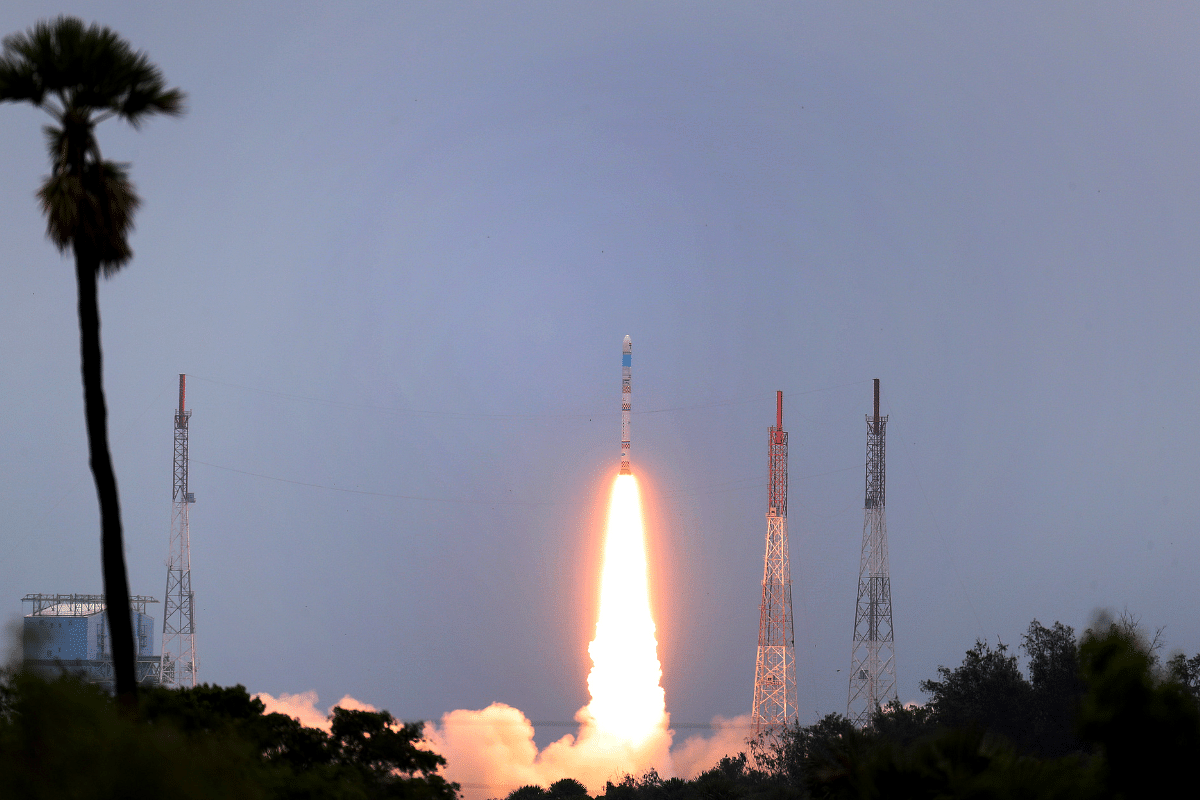Context
ISRO’s Maiden SSLV Mission Runs Into A Technical Glitch; Satellites No Longer Usable

SSLV-D1/EOS-02 Mission
ISRO launched its new launcher, SSLV, but the mission developed an issue that has rendered the backpack satellites unusable.
Context: The launch vehicle was shot into space from the spaceport in Sriharikota at 9:18 am on 7 August (IST). It carried the 135 kg Earth Observation Satellite (EOS) 02 and the 7.3 kg student nano satellite AzaadiSAT.
The EOS-02 was an experimental optical remote sensing satellite with a high spatial resolution for application in areas like agriculture, forestry, geology, and hydrology.
AzaadiSAT, a tribute to India’s celebration of ‘Azaadi ka Amrit Mahotsav’, was a cubesat weighing around 8 kg. It comprised 75 different payloads each weighing around 50 g, built by girl students from across India’s rural regions.
Trouble: After the rocket launch, all the regular stages were completed successfully before an issue cropped up in the terminal stage.
“The satellites were placed in an elliptical orbit in place of a circular orbit,” ISRO chairman S Somanath said in a statement.
A tweet from ISRO said: “SSLV-D1/EOS-02 Mission: Maiden flight of SSLV is completed. All stages performed as expected. Data loss is observed during the terminal stage. It is being analysed. Will be updated soon.”
“The 356 km circular orbit was our intended orbit, but it (the launch vehicle) could place the satellite in an orbit of 356 x 76 km,” Somanath said later in his video statement.
The cause: “It is primarily due to one of logic that exist (sic) in the rocket to identify a sensor failure and go for a salvage option. That means the system has a deficiency which we need to look at very carefully and correct it with regard to a sensor isolation principle,” Somanath said.
The satellites will “come down” due to “atmospheric drag.”
“The satellites have already come down from that orbit and they are no longer usable,” the ISRO chief said.
Corrections: A team of experts has already gotten to work on better understanding the issue and determining why the satellites were placed in the wrong orbit.
The team will present recommendations that are expected to be implemented quickly.
“We hope that with the small corrections and further revalidation of those corrections through adequate number of tests, we will come back for launch for the next development flight of SSLV, SSLV-D2, very soon,” Somanath said, hoping for success next time around.
What's the SSLV: It stands for "small satellite launch vehicle."
The SSLV is a three-stage vehicle.
Whereas solid fuel fires its first three stages (87 t, 7.7 t, and 4.5 t), satellite insertion into the intended orbit is achieved through a liquid propulsion-based velocity trimming module as the terminal stage.
The launcher is 34 m tall, about 10 m less than the PSLV.
The SSLV diameter, at 2 m, is also lower than the 2.8 m of the PSLV.
There’s also a 200 tonne difference in lift-off mass between the SSLV (120 tonnes) and PSLV (320 tonnes).
Why SSLV matters: The SSLV promises low turnaround time, flexibility in accommodating multiple satellites, launch-on-demand feasibility, and minimal launch infrastructure requirements.
There’s a handsome demand among developing countries, private corporations, and educational institutions for the launch of small satellites, weighing up to 500 kg, into 500 km low-Earth orbit (LEO).
Larger launch vehicles, like the PSLV, are not ideal for smaller players.
The SSLV will, therefore, be used to deploy small satellites — spanning 10 kg to 500 kg — in LEO.
Bottomline: The SSLV is slated to become the next ISRO workhorse, playing a key role in the commercial small satellite launch services.
Small setbacks like this one are okay in what is set to be a highly promising course for India's decorated space sector.
Support Swarajya's 50 Ground Reports Project & Sponsor A Story
Every general election Swarajya does a 50 ground reports project.
Aimed only at serious readers and those who appreciate the nuances of political undercurrents, the project provides a sense of India's electoral landscape. As you know, these reports are produced after considerable investment of travel, time and effort on the ground.
This time too we've kicked off the project in style and have covered over 30 constituencies already. If you're someone who appreciates such work and have enjoyed our coverage please consider sponsoring a ground report for just Rs 2999 to Rs 19,999 - it goes a long way in helping us produce more quality reportage.
You can also back this project by becoming a subscriber for as little as Rs 999 - so do click on this links and choose a plan that suits you and back us.
Click below to contribute.
Latest